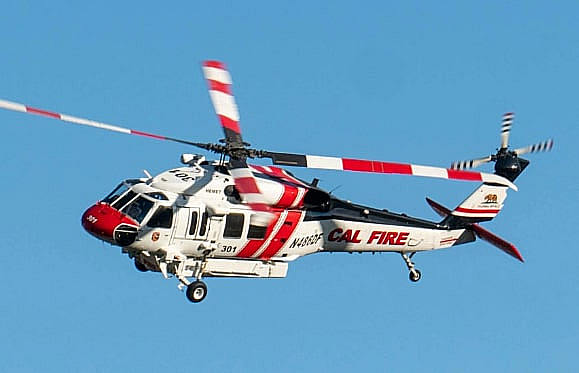Sikorsky S 70: Revolutionizing Tactical Operations with Cutting-Edge Technology
Sikorsky S 70: Revolutionizing Tactical Operations with Cutting-Edge Technology
Blog Article
Modernized Vertical Lift System With Advanced Composite Structures and Enhanced Safety And Security Measures
In the realm of vertical lift systems, a substantial change towards modernization has been observed, driven by the assimilation of innovative composite structures and increased precaution. These enhancements represent an essential advancement in the layout and capability of lift platforms, guaranteeing boosted performance and integrity throughout numerous sectors (sikorsky s 70). As markets make every effort for higher functional precision and safety and security criteria, the application of composite products and advanced safety and security attributes has actually become vital. In discovering the merging of modern technology and safety and security in modern-day lift platforms, a compelling narrative arises, showcasing the possibility for transformative improvements that accommodate the ever-evolving demands of commercial fields.
Evolution of Upright Lift Systems

The development of upright lift systems can be mapped back to basic sheave systems and early lift layouts. In time, advancements such as hydraulic systems, electrical motors, and advanced control systems have greatly boosted the efficiency and security of these systems. Suppliers have also focused on boosting the security, reach, and load-bearing abilities of upright lift systems to fulfill the diverse requirements of various sectors.
Furthermore, the assimilation of wise innovations like sensing units, IoT connectivity, and automation functions has additionally transformed the capabilities of modern-day upright lift systems. These technical improvements not only enhance functional efficiency however additionally ensure heightened safety and security criteria for workers using these systems at different heights. The continuous evolution of vertical lift platforms underscores their important role in enhancing vertical wheelchair across industries.
Integration of Advanced Compound Frameworks

Moreover, the use of sophisticated composite materials permits for even more complicated and maximized architectural styles, enabling designers to customize the platform's homes to satisfy particular performance needs. Generally, the unification of innovative composite frameworks in modern-day vertical lift systems stands for a substantial improvement in aerospace technology, leading to more reliable, reputable, and more secure airborne transport systems.
Improved Security Actions Execution
Implementing improved precaution is important in ensuring the ideal performance and dependability of contemporary vertical lift platforms. These measures include a series of methods targeted at mitigating threats and improving total safety criteria. One key aspect of improved safety and security steps is the assimilation of advanced sensing unit innovations to check various specifications in real-time. By making use of sensors for features such as structural health and wellness surveillance, lots monitoring, and ecological picking up, prospective threats can be identified early, allowing for positive upkeep and corrective actions.

Market Applications and Advantages
With advancements in innovation and design, improved upright lift systems have actually found diverse applications across different sectors, supplying significant advantages in performance and productivity. The construction market advantages from upright lift systems by making it possible for employees to accessibility raised locations safely and efficiently, improving total job timelines.
Additionally, vertical lift systems play a crucial role in the repair and maintenance of infrastructure such as bridges, high-voltage line, and structures, permitting service technicians to get to inaccessible locations easily (sikorsky s 70). The air travel sector additionally leverages these platforms for aircraft home maintenance and assembly check my source jobs, enhancing workflow effectiveness and making sure worker safety at heights. Generally, the widespread adoption of up-to-date vertical lift systems throughout sectors underscores their adaptability and the substantial improvements they bring to numerous operations
Future Trends in Lift System Technology
Incorporating sophisticated automation and intelligent functions, lift system innovation is positioned to reinvent vertical transport systems in the close to future. One vital pattern is the combination of Web of Things (IoT) technology, making it possible for lift platforms to connect real-time data for anticipating maintenance, enhancing performance, and improving safety. As lift platform innovation proceeds to advance, these fads are established to form the future of vertical transportation, making it more effective, safe, and straightforward.
Final Thought
Finally, the up-to-date vertical lift platform showcases the advancement of technology in the sector. By incorporating advanced composite structures and improved security procedures, this system provides enhanced effectiveness and safety for different applications. The industry can benefit greatly from these developments, and future fads in lift system innovation are likely to proceed surpassing these innovations for even higher success and effectiveness.
In the realm of vertical lift systems, a significant shift towards innovation has been observed, driven by the assimilation of sophisticated composite frameworks and heightened security measures. The continual advancement of vertical lift platforms highlights their essential duty in enhancing vertical mobility across markets.

The unification of sophisticated composite structures in modern upright lift platforms has dramatically boosted their architectural integrity and performance capabilities. By integrating these sophisticated composites into the layout and building and construction of vertical lift systems, manufacturers can minimize general weight, boost load-carrying capacity, and boost the system's try this site resilience and long life.
Applying improved security actions is vital in guaranteeing the optimal efficiency and dependability of modern vertical lift platforms.
Report this page